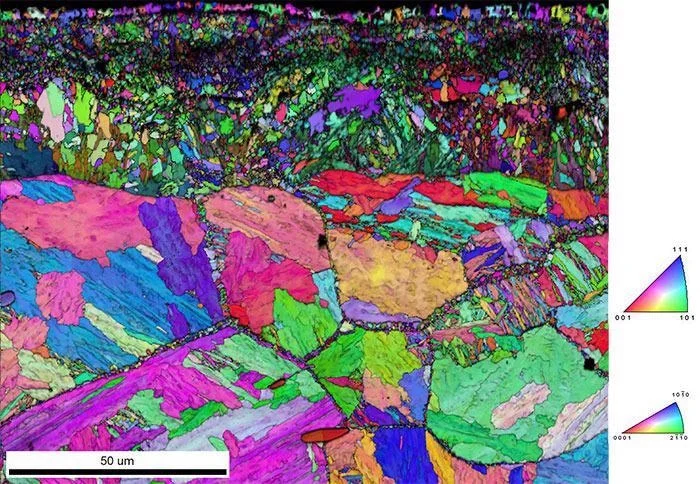EDAX Pegasus is a well-known materials characterization system that integrates elemental composition and crystallographic orientation data into a single, easy-to-use package.
The user-friendly APEX™ software combines powerful analytics energy dispersive x-ray spectroscopy-electron backscatter diffraction (EDS-EBSD) algorithms to collect and display high-quality data in a rapid, simple, and dependable way.
When combined with EDAX detectors, APEX increases user productivity and gives the best alternative for simultaneous EDS-EBSD microstructural investigation.
Integrated EDS–EBSD
- The ChI-Scan™ feature enhances phase mapping and EBSD indexing by combining EDS compositional data with EBSD crystallographic data.
- Sophisticated EDS quantification with optimization is employed to handle high-tilt EBSD geometries.
- Uses a fully integrated EDS-EBSD system to capture structural and crystallographic data at the same time.

EBSD Image Quality and IPF Orientation Map of an Al-Cu-Mg alloy were simultaneously collected then shown as a combined EDS–EBSD dataset. Image Credit: Gatan
Features and benefits
High throughput 3D EDS–EBSD
- To increase signal during low-dose and low-kV operation, all EDS detectors employ the maximum transmissivity Si3N4 window available.
- The EBSD Confidence Index value provides a measurable quality rating for the crystallographic indexing solution.
- The Octane Elite and Octane Elect EDS detectors, as well as the Velocity™ EBSD detectors, offer the most rapid acquisition of any integrated EDS-EBSD system.
Direct Detection EBSD
- Clarity™, the ultimate EBSD detector series, employs direct detection technology to deliver unparalleled performance in low-dose and low-kV analytical settings.

EBSD Image Quality and IPF Orientation map of a nitrided surface of a steel sample where combined EDS–EBSD information was used to differentiate similar crystallographic phases. Image Credit: Gatan
Conclusion
Pegasus systems can tackle both routine and complex material characterization issues. Pegasus allows users to focus their efforts on understanding their materials rather than collecting data, as it gives elemental and crystallographic results quickly and easily.
